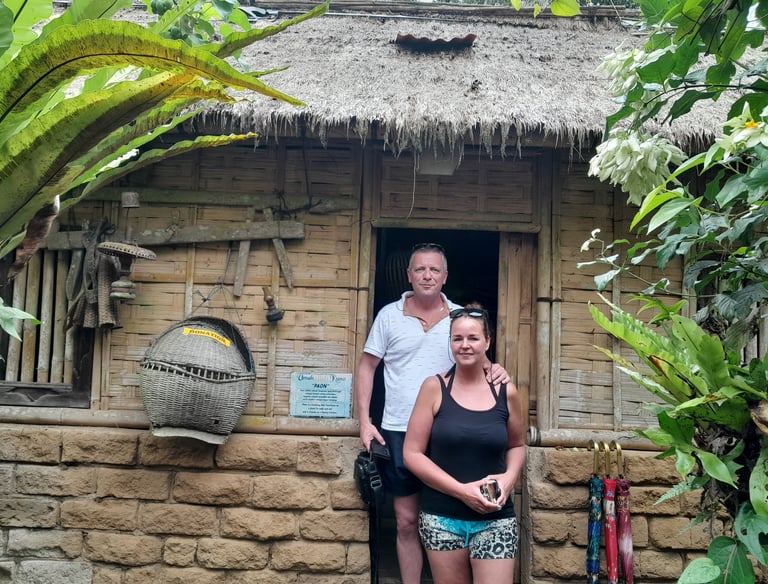Bali Tour Services
Bali traditional house


Bali, Indonesia, is renowned for its rich culture, stunning landscapes, and traditional architecture that reflects the island's unique heritage. A traditional Balinese house, known as a 'rumah adat,' serves as a profound representation of the Balinese way of life, deeply rooted in spiritual and communal values.
A typical Balinese house is not merely a dwelling; it’s a complex of structures arranged according to traditional principles. The layout is purposefully designed to harmonize with the surrounding environment, both spiritually and physically. The concept of 'Tri Hita Karana'—a philosophy emphasizing harmony between God, humans, and nature—guides the architecture and lifestyle in these homes.
Structure and Layout
A Balinese house generally comprises several pavilions (known as 'bale'), each serving different functions. The primary structure often includes a central living area, where family members gather for social activities. Surrounding this area, you might find separate pavilions designated for sleeping, cooking, and bathing. Each of these buildings is typically built with natural materials like wood and bamboo, adorned with beautiful carvings that depict local myths and nature.
Central to the layout is the 'jaba,' or courtyard, which acts as a sacred space for rituals and family gatherings. This open area is often adorned with plants and flowers, creating a serene atmosphere that welcomes the island's natural beauty.
Cultural Significance
Beyond their aesthetic appeal, traditional Balinese houses are steeped in cultural significance. The design reflects the hierarchy and relationships within the household, with spaces allocated based on the age and status of family members. The eldest members often have access to the more significant and centrally located structures, symbolizing respect and reverence.
Additionally, rituals and spiritual practices are integral to Balinese life, and the layout of the house accommodates this. Temples, which are often part of the home compound, serve as places of worship and reflection. Here, offerings are made to the gods to seek blessings for the family and their endeavors.
Materials and Aesthetics
The materials used in constructing a traditional Balinese home also reflect the island’s commitment to sustainability. Local stone, clay tiles, and thatch are commonly employed, providing natural insulation and protection against the elements. The wooden beams and intricate carvings, often made from teak or mahogany, enhance the structure's aesthetic value and cultural significance. The designs frequently combine traditional motifs with contemporary elements, showcasing the adaptability of Balinese architecture while preserving its heritage.
Color plays a vital role in the aesthetics of a Balinese home. Brightly colored fabrics for sarongs and banners are often used in decorating the space, bringing vibrancy and life to the environment. The interplay of natural colors from the surrounding landscape, such as lush green rice paddies and the blue sky, complements the traditional architecture, creating a harmonious living space.
Community and the Balinese Way of Life
Living in a traditional Balinese house fosters a strong sense of community. Homes are typically built in clusters, and neighbors often engage in communal activities, reinforcing social ties. Festivals and ceremonies frequently take place in the open courtyards or within shared spaces, bringing together families and the larger community.
Residents actively participate in communal decisions regarding the maintenance of public spaces and the organization of ceremonies, showcasing the unique Balinese virtue of mutual cooperation. This communal lifestyle is nourished by the traditional home, which serves as a foundation for social interaction and cultural continuity.
Conclusion
In essence, a traditional Balinese house is more than just a home; it is a living testament to a culture that values harmony, spirituality, and community. Each structure tells a story, reflecting the intricate connection between the people, their beliefs, and the natural landscape. As Bali continues to evolve and urbanize, the commitment to preserving these traditional homes remains crucial, ensuring that future generations can experience and appreciate the beauty and values embedded in Balinese architecture.
FAQ Section
What services do we offer?
We provide private tour driving, airport services, and customized daily tours and activities in Bali.
How to customize my itinerary?
What safety measures are in place?
Is there a cancellation policy?
What are the payment options?
We prioritize your safety and comfort during all our tours. Experienced drivers ensure a secure experience.
We accept various payment methods, including cash, credit cards, and mobile payments for your convenience.
You can customize your itinerary by discussing your preferences with our team before or during your booking.
Yes, we have a cancellation policy. Please review it on our website or contact us for details.
Services
Private tours, airport service, and activities.
Contact us